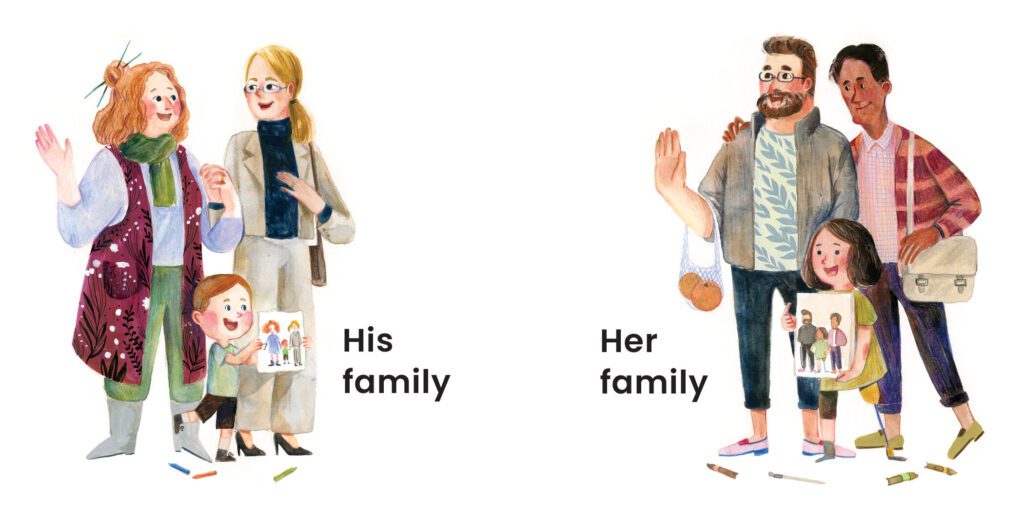
Inclusive Children's Book Teaching Guide
My Family, Your Family!
What is this book about?
There is no such thing as a one-size-fits-all family. Families can be large or small, blended or shared, here or there.
The families in this book might have one dad or two moms. They might have grandparents or they might not. They may have no brothers and sisters or a lot!
Your family or my family, whatever it’s like, it’s the perfect fit.
The only tradition that matters to these families is the love that binds them together.
Who is depicted in this book?
- LGBTQ+ led families, as well as many other types of families
What early childhood themes and concepts does this book explore?
- Various types of families, such as families with two moms or dads or blended and extended families
- What parents and children do together
How does this book support anti-bias education?
By celebrating a variety of family structures, this book offers space for children to demonstrate family pride and show comfort and confidence about their own family structures. The images and text may be used to support the following core goal from the book, Anti-Bias Education for Young Children and Ourselves:
Diversity—Teachers will promote each child’s comfortable, empathetic interactions with people from diverse backgrounds so that children will express comfort and joy with human diversity, use accurate language for human differences, and form deep, caring connections across all dimensions of human diversity.
How can this book be used to meet early childhood learning standards?
For all ages
Use My Family, Your Family! to meet early childhood literacy standards
For children from birth to age three
Teaching suggestion: Point out familiar people and relationships depicted in the book and model their names. Relate the book to your classroom displays of family photos.
What Illinois Early Learning Guideline does this meet for children from birth to age three?
Developmental DomainLanguage Development, Communication and Literacy
Standard: Receptive CommunicationChildren demonstrate the ability to comprehend both verbal and nonverbal communication.
Indicators for children:
- Recognizes and demonstrates understanding of familiar pictures, people and objects, such as saying “mama” while pointing to mother (16–24 months)
- Responds verbally and/or nonverbally to comments or questions while engaged in conversations with both peers and adults (21–36 months)
Teaching suggestion: Point out and model ways that parents show love and care for their children, such as reading or playing together, creating art, sharing meals, going for a walk, or engaging in daily rituals such as bathtime and bedtime.
What Illinois Early Learning Guideline does this meet for children from birth to age three?
Developmental DomainSelf-Regulation
Standard: Physiological RegulationChildren demonstrate the emerging ability to regulate their physical processes in order to meet their internal needs and external demands in accordance with social and cultural contexts.
Indicators for children:
- Seeks out caregiver through physical actions (7–18 months)
- Seeks caregiver support when feeling overwhelmed by emotion (21–36 months)
For preschoolers (ages three to five)
Teaching suggestion: Invite the children to talk about family structure. Ask questions such as: "Who is in your family? What is the same and different among families? What is something great about your family?" Encourage the children to discuss and draw or write about their own families as two of the children in the book do, including the different people in their families and the activities that they engage in together.
What Illinois Early Learning and Development Standards does this meet for preschoolers?
Social Studies Standard18BDevelop an awareness of self within the context of family.
Benchmark 18.B.ECa:
Understand that each of us belongs to a family and recognize that families vary.
See inside this book.

